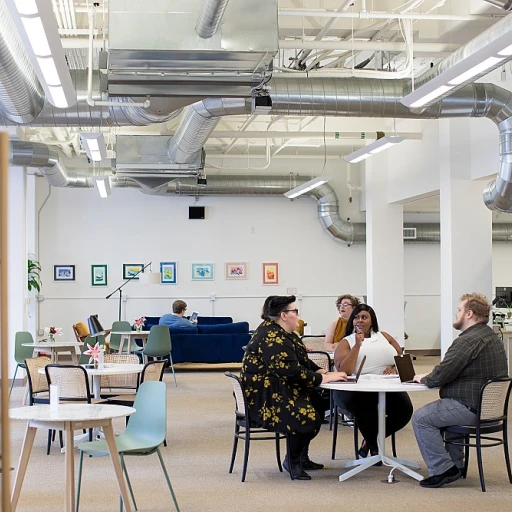
Defining ASO and PEO
ASO and PEO: Understanding the Terminology
The landscape of human resources has encountered a significant evolution with the introduction of Administrative Services Organizations (ASO) and Professional Employer Organizations (PEO). Both these models provide businesses with a means to outsource essential HR functions, but they offer different levels of involvement which can impact the employment relationship. At its core, an ASO focuses on administrative outsourcing. Known for handling tasks like benefits administration, payroll processing, and compliance reporting, an ASO allows companies to maintain full control over their workforce while benefiting from specialist support. This is particularly beneficial for companies seeking efficient administrative services without altering their employment structure. On the other hand, a PEO operates more like a co-employer. This model gives the third-party organization shared responsibility over the employer record, payroll tax, and workers' compensation. Businesses choosing a PEO establish a comprehensive partnership where both entities assume a more collaborative approach to HR functions. This can be particularly advantageous in risk management and the provision of employee benefits, ultimately offering robust support to client companies. Understanding the nuances between these models is crucial for any business looking to optimize its HR strategies. Whether a company decides to work with an ASO or a PEO, the integration of artificial intelligence promises to redefine these structures in unique ways, paving the way for enhanced employer and employee experiences. For those interested in exploring how talent and intelligence have evolved over time in HR settings, this journey through talent evolution offers valuable insights into the progression of these concepts and how they inform the present-day dynamics of ASO and PEO systems.AI Integration in ASO and PEO
Exploring AI Integration: Transforming Human Resources
Artificial Intelligence (AI) is reshaping how companies manage their human resources functions, especially in the context of Professional Employer Organizations (PEOs) and Administrative Services Organizations (ASOs). Both PEOs and ASOs rely on technology to streamline business processes, offering a range of services including payroll processing, compliance, and benefits administration. Implementing AI within these frameworks enhances the efficiency and accuracy of various HR tasks. For instance, AI-driven systems can automate payroll calculations and payroll tax filings, reducing manual errors and improving compliance with regulations. Furthermore, these systems tailor employee benefits packages, ensuring optimal client company satisfaction while accurately overseeing health insurance options. Another significant advantage of AI in both PEO and ASO models is in risk management. AI tools can analyze employment agreements and employment relationships, identifying potential compliance issues and suggesting solutions before they escalate. This proactive approach mitigates risks associated with workers' compensation and other employment-related claims. In a broader context, the integration of AI also facilitates improved business support. Companies can choose services that best align with their needs, optimizing administrative and employment outsourcing efforts. This not only frees up internal resources but also supports companies in acquiring top talent and maintaining a competitive edge in the market. For more insight into how AI is shaping the future of human resources outsourcing services, consider addressing common questions in AI for human resources. This resource delves into the complexities and opportunities AI presents in this domain. Incorporating AI into PEO and ASO frameworks transforms the way employer organizations manage HR functions, providing streamlined services that benefit both employers and employees.Benefits of AI in ASO vs PEO
Maximizing AI to Streamline Operations
Artificial intelligence plays a pivotal role in transforming how administrative service organizations (ASOs) and professional employer organizations (PEOs) operate. While both models leverage AI to enhance service delivery, the specific benefits are notably distinct depending on the structure and services offered. AI integration optimizes payroll processing, risk management, and benefits administration within PEOs. By employing AI-driven tools, PEOs can offer seamless payroll and tax services, ensuring compliance with employment regulations and minimizing the risk of human error. Companies that utilize these tools often experience greater efficiency in managing intricate employment relationships and keeping up with ever-changing labor laws. ASOs benefit from AI by offering businesses more personalized support. Through AI-powered data analytics, ASOs can efficiently assess a client's human resources needs, providing tailored administrative services that align with the client company's objectives. This level of personalization enables businesses to handle specific HR functions without relinquishing their role as the legal employer. Consequently, AI-assisted ASOs empower companies to retain control over employment agreements while benefiting from administrative outsourcing. Moreover, AI enhances employee benefits management across both ASOs and PEOs. Offering predictive insights into employee needs, AI tools enable organizations to create more attractive benefits packages, contributing to higher employee retention and satisfaction. Whether a company chooses PEO or ASO, AI technologies support businesses in maintaining compliance and delivering superior customer service. For more insights on how AI intersects with human resources, including understanding employee rights, click here.Challenges in Implementing AI
Overcoming Hurdles in AI Implementation
While the benefits of integrating AI into both ASO and PEO models are numerous, achieving seamless implementation comes with its own set of challenges. For starters, businesses may be wary of transitioning to AI-driven systems, due to concerns about data privacy and security. As both Professional Employer Organizations (PEO) and Administrative Service Organizations (ASO) handle sensitive employee information, ensuring robust data protection and compliance is critical.
When a company chooses to leverage AI for payroll and other administrative services, it must address the potential for disruption during the transition phase. Companies need to integrate AI solutions without compromising the accuracy of payroll processing or the integrity of employee benefits management. Employers must carefully choose AI solutions that align with their existing systems and processes to minimize disruptions in the employment relationship.
Risk management is another area where challenges can arise. As AI systems become integral to employment agreements and worker compensation processes, both PEOs and ASOs must ensure that AI solutions comply with current labor laws and regulations. This can be particularly demanding for third-party services organizations, which must balance multiple client companies' varying compliance requirements.
Adapting to new technologies also requires training and support for employees and HR professionals. Both ASOs and PEOs must invest adequately in training programs to ensure their teams can effectively utilize AI tools for administrative and employment-related tasks. This step is crucial for maintaining a robust and harmonious employment relationship between client companies and their workforce.
Finally, businesses may find the cost of AI solutions to be a preliminary barrier. While the long-term benefits of AI integration in human resources operations are significant, the initial investment in technology and training can be substantially high. Companies must carefully evaluate their budgetary constraints and the potential return on investment to make informed decisions.
Case Studies: Success Stories
Success Stories: AI at Work in HR Services
Businesses that have embraced AI in their HR services, particularly in Professional Employer Organizations (PEOs) and Administrative Services Organizations (ASOs), are reaping substantial benefits. One prominent area where success has been noted is in payroll processing. Automation technology has significantly improved the speed and accuracy with which payroll taxes are calculated, ensuring compliance with ever-changing regulations without overburdening company resources. In the landscape of employee benefits, AI has facilitated better management of health insurance, retirement plans, and other benefits administration. Companies choosing AI-driven solutions experience enhanced efficiency, improved employee satisfaction, and reduced errors. These solutions have empowered businesses to tailor benefits packages to meet the unique needs of their workforce. Additionally, compliance, a critical aspect of human resources, has been enhanced by AI-powered systems that monitor changes in employment laws. Such systems proactively suggest adjustments to keep client companies and their workers in alignment with legal requirements. This proactive approach minimizes the risks associated with compliance errors, fostering a smoother employment relationship. Another notable success story is the reduction of administrative burdens through AI in ASO and PEO services. By outsourcing complex HR functions to these third-party organizations, businesses can focus more on core functions, enhancing overall productivity. AI tools help ASOs and PEOs provide reliable support services, ensuring that companies remain agile and responsive to their employees' needs. While implementing AI comes with its challenges, as outlined in the previous sections, these case studies highlight the transformative power of AI in human resources. Companies that integrate AI into their administrative services, payroll, and risk management functions are better positioned to thrive in a competitive market.Future Trends in AI for ASO and PEO
Exploring the Path Forward: AI Developments in ASO and PEO
As artificial intelligence continues to evolve, its impact on ASO and PEO environments grows, shaping how businesses handle human resources management. Here’s what the future might hold for these services:Increased Efficiency in Administrative Services: AI is anticipated to bring more advanced automation across administrative tasks in both PEO and ASO organizations. This could lead to faster, more accurate payroll processing, benefits administration, and risk management, allowing professionals to focus on more strategic roles.
Enhanced Compliance and Reporting: As employment regulations become increasingly complex, AI-driven compliance tools will play a crucial role in streamlining the process for both ASOs and PEOs. This will help companies maintain accurate records, adhering to ever-changing laws and reducing the administrative burden related to employment agreements and payroll taxes.
Personalized Employee Support: Machine learning algorithms might soon enable PEOs and ASOs to tailor employee benefits and support services more closely to individual needs, enhancing the employment relationship. This personalization could improve overall employee satisfaction and reduce turnover rates.
AI-Driven Risk Management: Predictive analytics could become a vital tool for managing workers’ compensation claims and other potential risks. By identifying patterns and potential risks ahead of time, ASOs and PEOs can proactively address issues before they escalate.
Evolution of Third-Party Services: The role of third-party services organizations could also transform, with AI enabling a more seamless integration with client companies. This will allow businesses to choose solutions that suit their unique needs and promote a more cohesive employment relationship.
Businesses aiming to remain competitive must keep an eye on these developments and consider how adopting AI might benefit their HR strategies. The future of AI in ASOs and PEOs hints at a landscape where human resources processes are more streamlined, compliant, and employee-focused.












